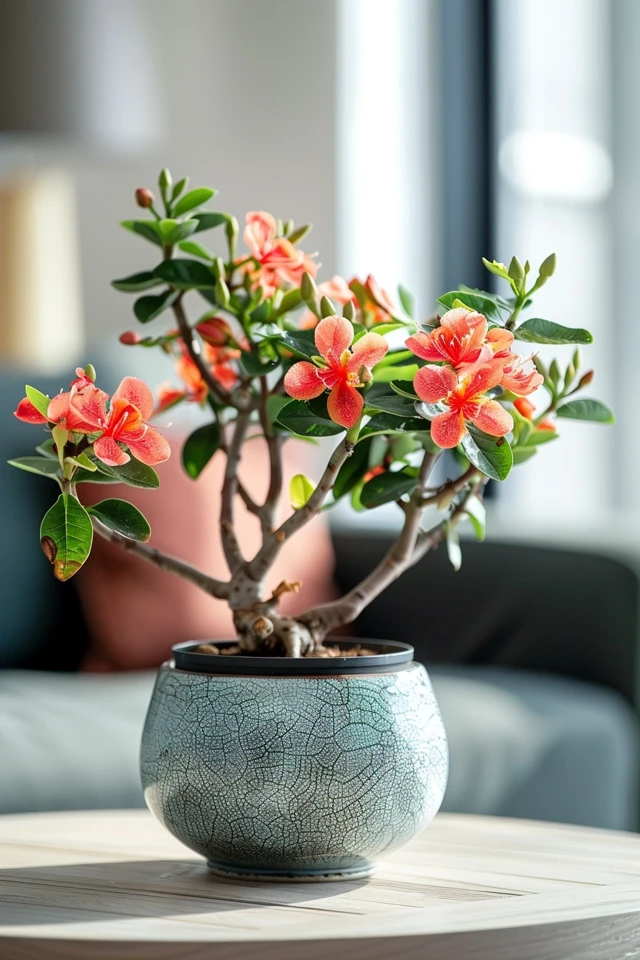Repotting desert roses is an essential task to ensure their optimal growth and health. Whether you’re a seasoned plant enthusiast or just starting out, understanding the repotting process is crucial for the well-being of your desert rose plants. In this article, I will guide you through the steps of repotting desert roses, including when to repot, choosing the right container and soil mix, and providing aftercare for these beautiful succulents.
Key Takeaways:
- Repot desert roses every one to two years to promote optimal growth.
- Signs that indicate the need for repotting include roots infiltrating through the drainage holes and a crowded container.
- Choose a slightly wider container with good drainage when repotting desert roses.
- Use a cactus or succulent potting mix or a mixture of regular potting soil and equal parts perlite or sand for well-draining soil.
- Allow the plant to settle in its new pot for about a week before resuming regular watering.

Selecting the Right Soil Mix for Desert Roses
The soil type is crucial for the growth and health of desert roses. These plants thrive in a well-draining soil mix similar to what is used for cacti and succulents. To create the best soil mix for desert roses, combine 65% sharply draining material like perlite, 10% coconut coir or peat moss, 10% coarse sand, and 15% potting soil. This blend provides the perfect balance of quick drainage and water retention, ensuring that the roots do not get waterlogged. Avoid using rich, dark commercial soil mixes as they retain too much moisture, increasing the risk of root rot.
When repotting desert roses, it’s important to use the right soil mix. I recommend using a cactus and succulent potting mix or a soil mix specifically formulated for succulents. These mixes already have the ideal proportions of the required ingredients, making it easier for you to repot your desert roses confidently.
When it’s time to repot your desert rose, first make sure that the soil is dry. Gently remove the plant from its current pot, taking care to brush away any soil from the roots. Prune any dead or damaged roots. Place the plant in the center of the new pot and carefully fill it with the soil mix, ensuring that the roots are spread out. Lightly water the plant, and then allow the soil to dry between each watering to prevent overwatering and root rot.

Aftercare and Ongoing Maintenance for Desert Roses
After repotting, providing proper aftercare and ongoing maintenance for desert roses is crucial to their continued health and growth. To ensure their well-being, it’s important to follow a few key care tips.
First and foremost, desert roses prefer to fully dry out between watering to prevent root rot. During the summer and spring months, when the plant is actively blooming and exposed to more sunlight, increase the frequency of watering. However, in the fall and winter when temperatures are cooler, reduce watering to avoid overhydration.
In addition to regular watering, fertilizing desert roses is essential for their optimal growth. During the spring and summer, when the plants are actively growing, use a balanced, high-nitrogen fertilizer. However, it’s best to avoid fertilizing or repotting during the winter months as desert roses go through a period of dormancy.
Lastly, it’s important to monitor the plant closely for any signs of stress or disease, and adjust the care routine accordingly. Desert roses thrive in bright, indirect light, so make sure to provide them with adequate sunlight. Remember to wash your hands after handling desert roses, as their sap is toxic.
By following these desert rose care tips and providing ongoing maintenance, you can ensure your plants thrive, displaying vibrant blooms and healthy growth.


